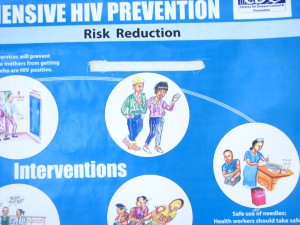Pill does not cure gender inequality
There’s a very illuminating leader in The Lancet last week about maternal mortality and the fact that despite sustained global campaigning efforts there has been little progress on the Millennium Development Goal to reduce maternal deaths by 75% by 2015.
The article makes some good suggestions for why this has been; vertical disease programmes have seemingly been based on straightforward interventions while maternal health programmes do not rely on ‘a pill'; maternal health progs have been limited and not taken into account the interactions with other health issues (e.g. HIV/AIDs and maternal deaths); there has been a paradigm shift within maternal health from vertical interventions to health systems strengthening which has not been matched with a funding shift; etc.
But one thing that was not mentioned, and only alluded to by reference to a ‘continuum of care’, is the impact of the status of women, views on female sexuality and reproductive autonomy which arguably are greater indicators of maternal death than skilled birth attendants (although in fact these things are inextricably linked).
For example, Sierra Leone has one of the worst maternal mortality ratios in the worst (either 1st or 2nd together with Afghanistan). Over 90% of women are also subjected to female genital mutilation in Sierra Leone (UNICEF).
Similarly in South Africa where there is particular interaction between maternal deaths and HIV/AIDs there is also endemic sexual violence where it is estimated that women born in South Africa have a greater chance of being raped than learning to read.
Now we cannot wait for female emancipation around the world to bring down maternal mortality, but we have to take an approach to tackling women’s health problems which recognises societal influences, culture and the centrality of sexual and reproductive rights to saving women’s lives.
A WHO study found that about 40 per cent of the healthcare infrastructure across sub-Saharan Africa is operated by faith-based groups. I have heard much higher estimates than that. This would inevitably have an affect on women’s (as well as men’s) sexual and reproductive rights, access to information and access to services.

This picture was taken in a Catholic run health centre in Kenya. It is a HIV/AIDs prevention poster in which a sticker has been put over the phrase ‘Use a Condom’.
To reduce maternal deaths, women need to get married and have kids later, have less children therefore use family planning, be well nourished and free from disease, have access to primary healthcare as well as emergency obstetric care (which is culturally appropriate and in their language), have access to safe and legal abortion, and be educated in their rights, their right to healthcare, their right to information and – very simply – have the right and ability to say no or yes to sex and insist on condom/contraceptive use.
Drug treatment of post-partum haemorrhage or sepsis may fit nicely into our drug delivery programmes, work well with our partnerships with pharmaceutical companies, and definitely help save lives. But it is a drop in the ocean without women themselves having bodily integrity.




